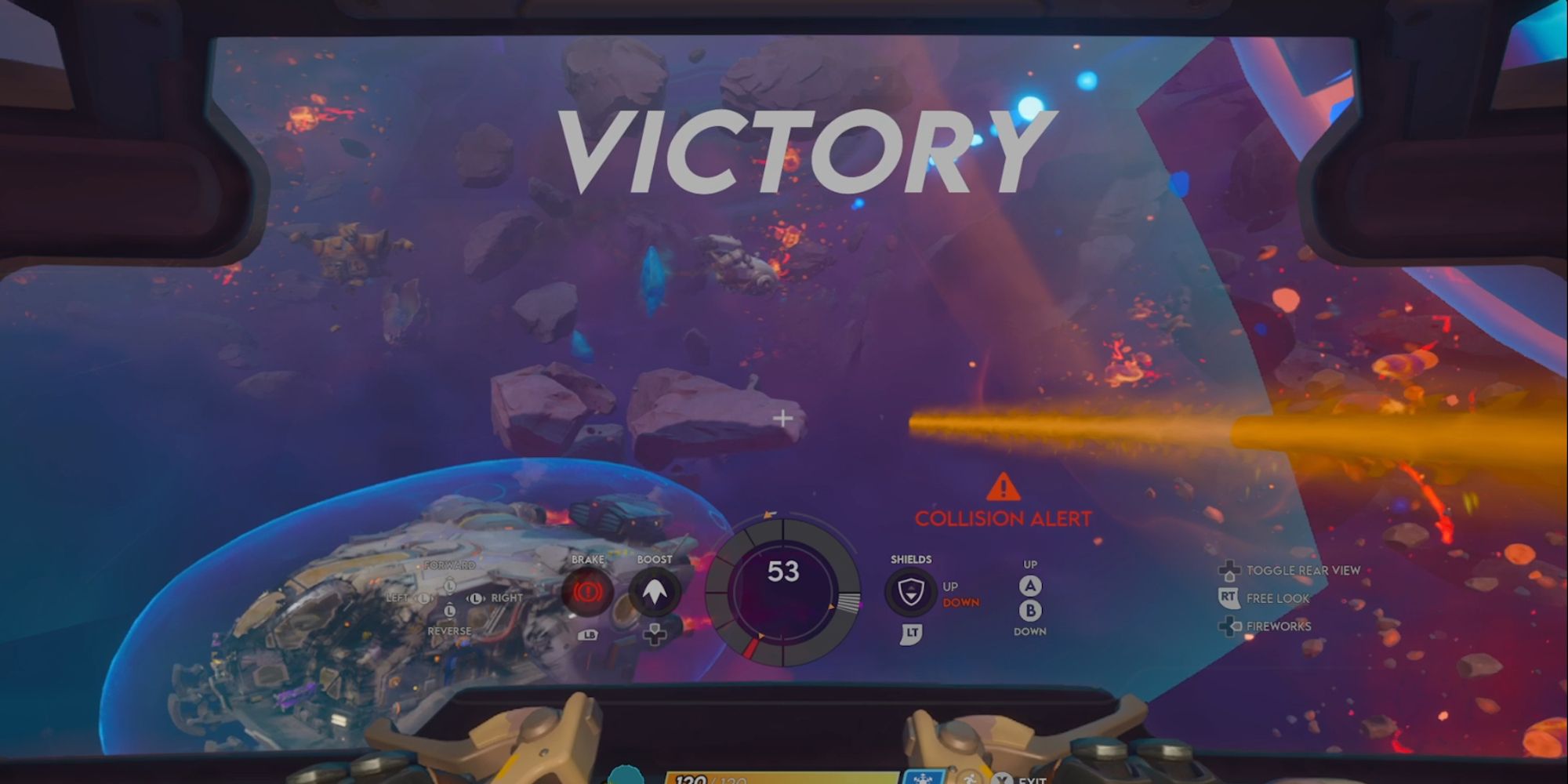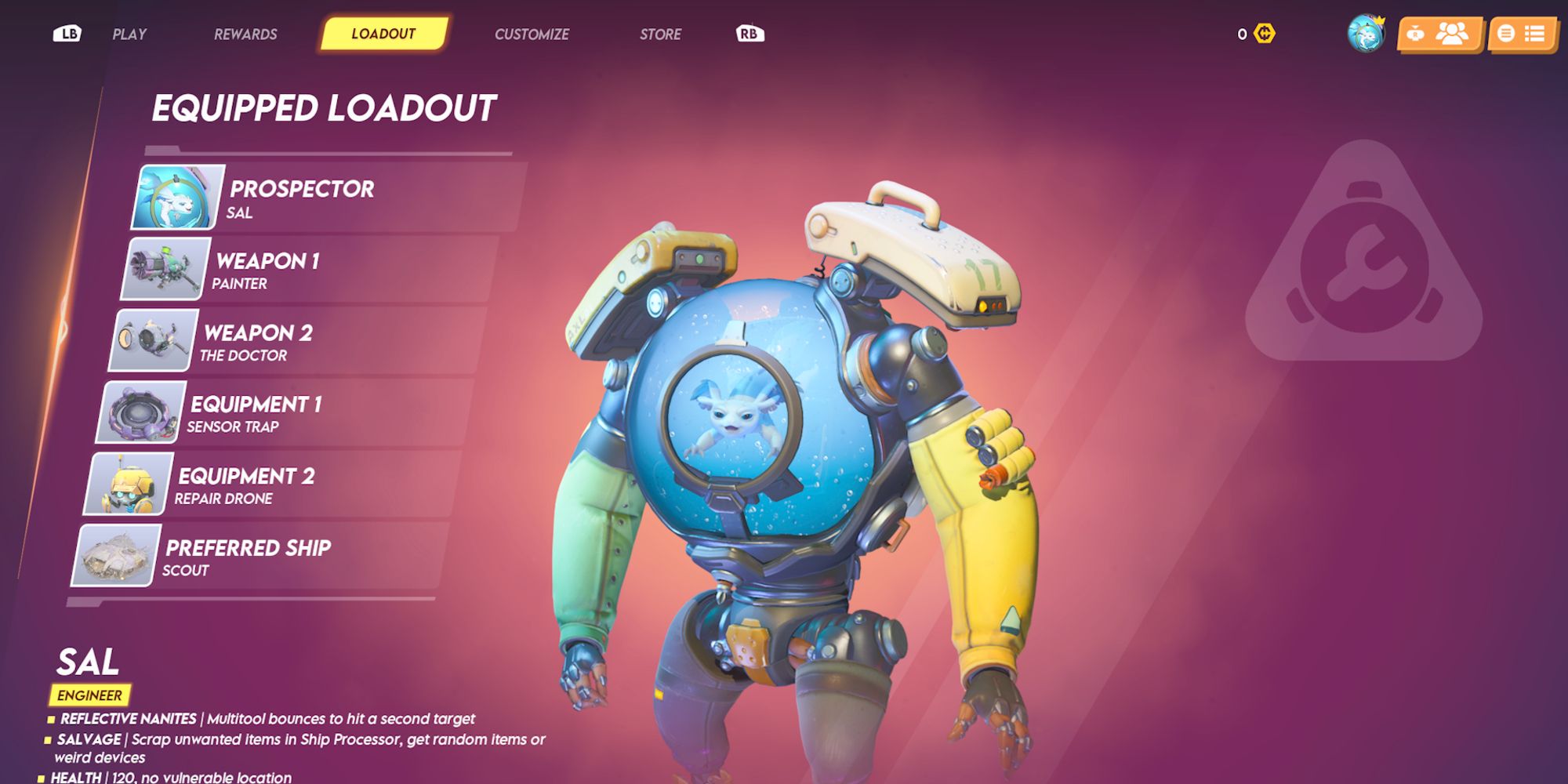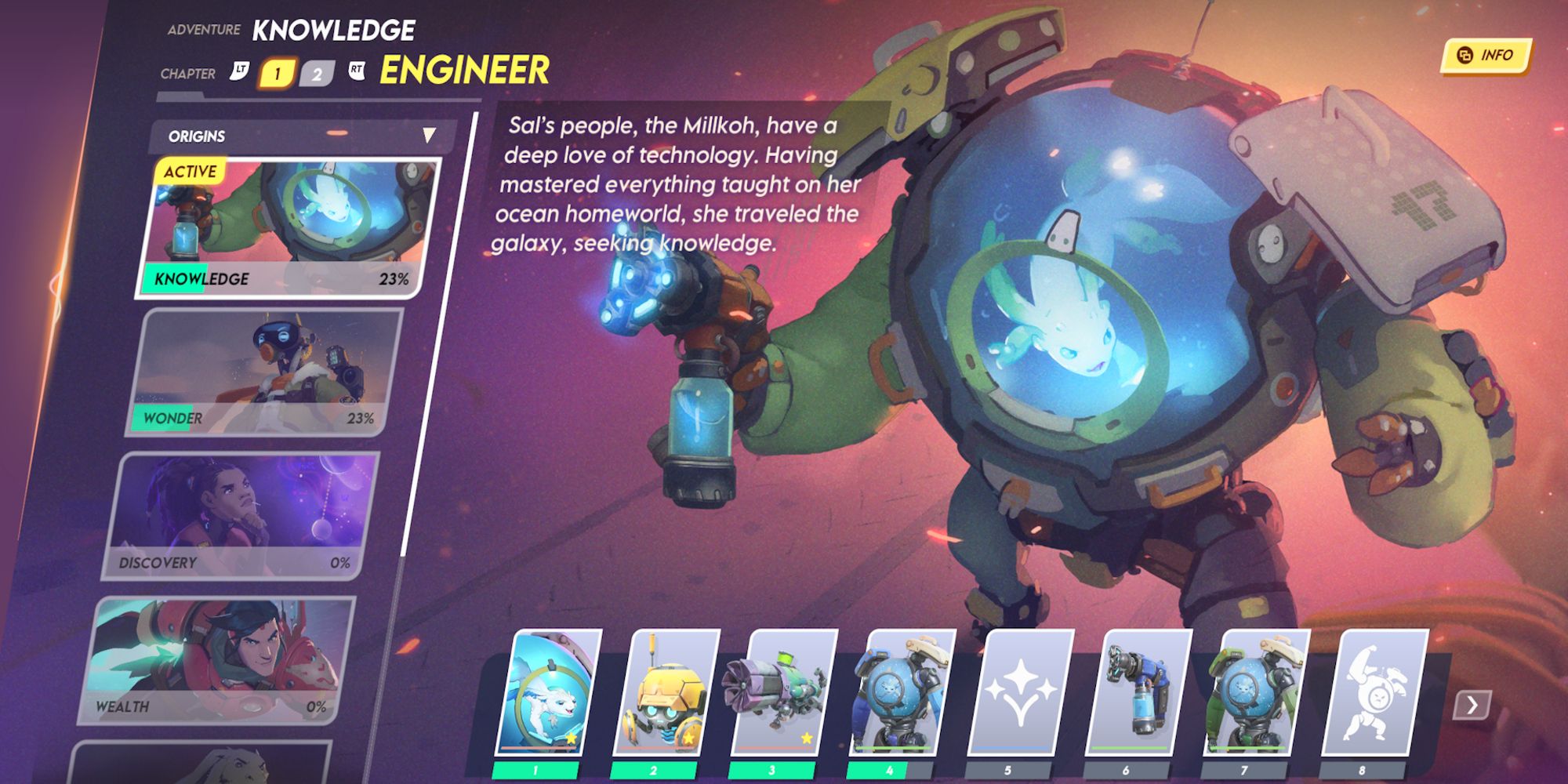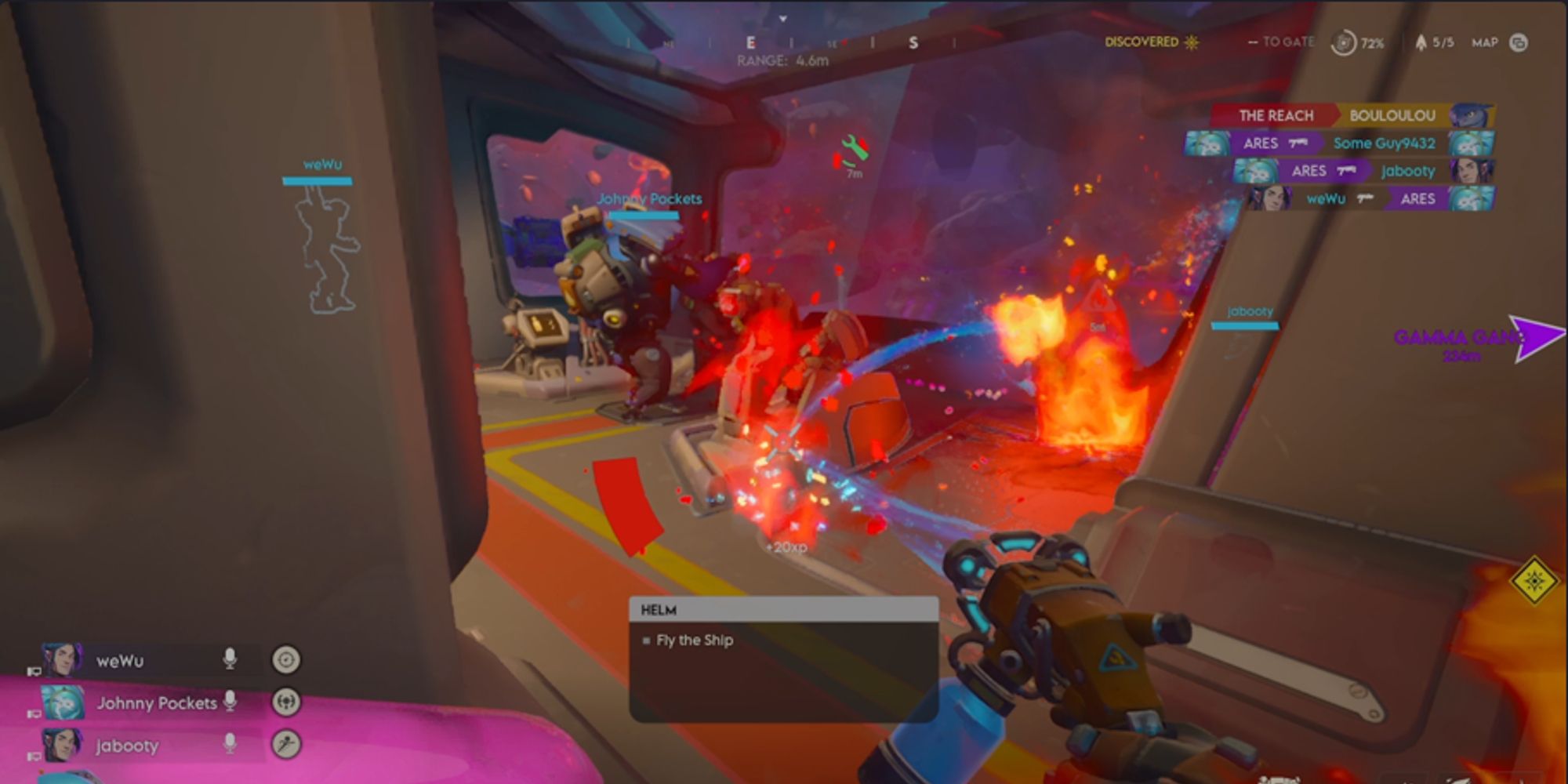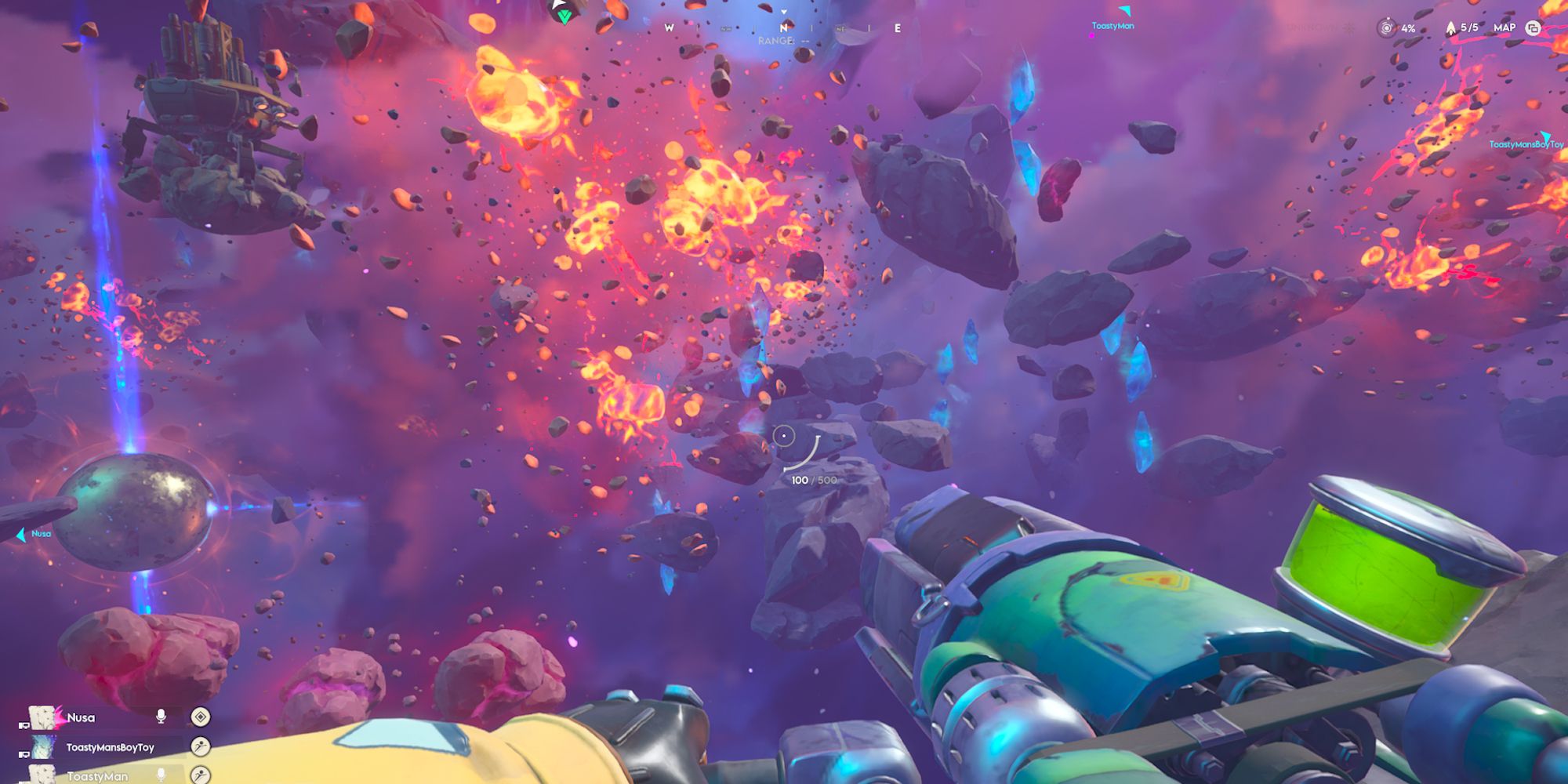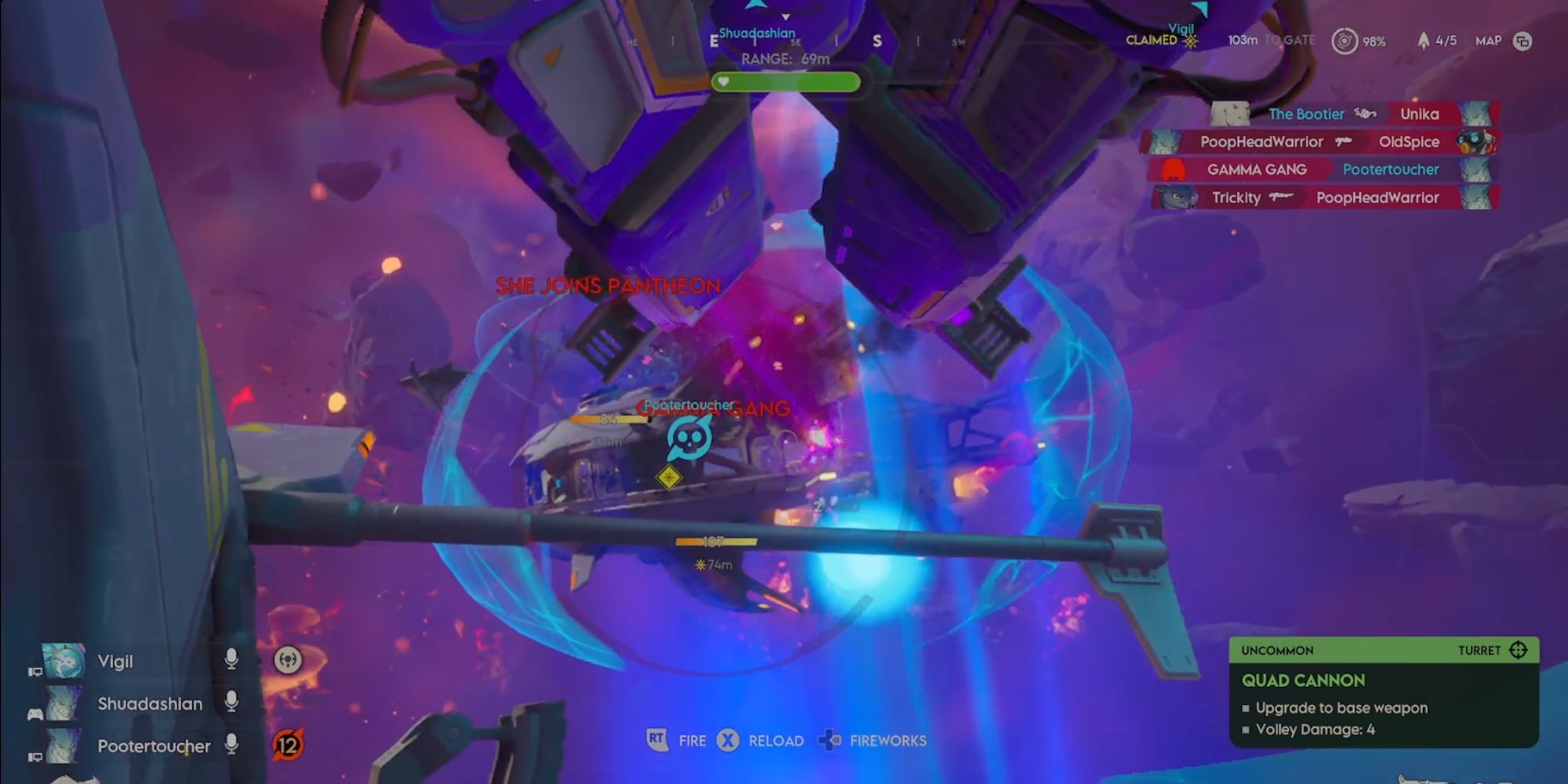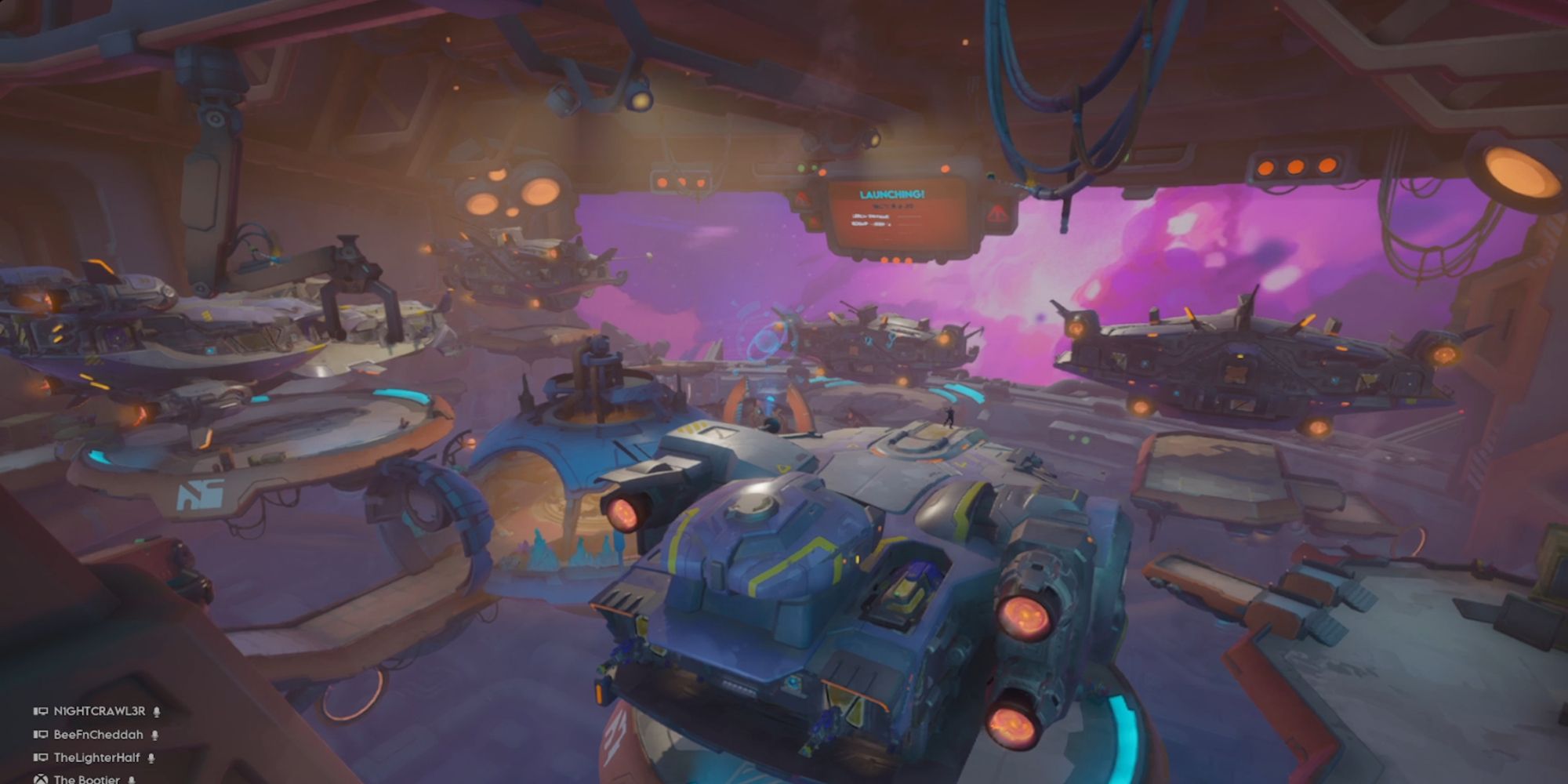[ad_1]
Wildgate is a brand-new IP from Moonshot Games, a brand-new studio, and Dreamhaven, a relatively new publisher with a few games under its belt. Releasing a new multiplayer game in the current industry climate is a bold move and one that I can ultimately respect.
Although the studio and publisher are new, the talent at both is not, as both are populated by former Blizzard employees who found a home there.
If you recognize the publisher name, it’s likely because you’re a fellow Overwatch addict who was around when Mike Morhaime left Blizzard. You’re probably wondering why any of that matters, but from just one look at this game, it’s hard to deny the immense amount of influence Overwatch had on this title, even from just a visual standpoint.
Depending on your feelings about Overwatch, this may not be something you want to hear, but I recommend approaching it with an open mind. Is Wildgate worth the time? Is it a good enough game to help make a name for a new studio? And most importantly of all, is Wildgate a good game? I’ll try to answer all this and more during this review.
What Is Wildgate?
That’s probably the hardest question I’ve had to answer in a long time. Wildgate sort of exists in its own niche as a combination of several other styles of games. As a part sandbox, part PvP, part Hero-Shooter, and part Battle Royale game, you’d imagine it’s just too many things to combine into one, but they managed to do it. Before I delve too deeply into how well it works, I think it’s pertinent to explain more about the game, given its uniqueness.
WildGate is, first and foremost, a PvP space battle game similar to Sea of Thieves Arena mode. It has an objective for you to complete, but you can also just play it more as a battle royale with last-man-standing rules. You and three other players will spawn in a lobby and have a few minutes to discuss strategies and your team composition.
There are a number of characters to choose from that all thrive in different ways. Sal, the engineer, excels at fixing the ship, while Venture, an adventurous robot, excels at exploring POIs and gathering gear.
Space combat in this game feels almost too good to be true.
You’ll also be able to select a preferred ship from one of four total vessels. Each one has its advantages and disadvantages, which adds a layer of variability to how you’ll play each round of Wildgate. After a short time, you’ll spawn into the Lucky Dock where you can check out the enemy teams’ ships and comps.
You’ll also be able to see what sort of modifiers are active for this match. There are things like Big Asteroids, which spawn several large asteroids across the map, or Low Fog, which creates a dense haze around the bottom of the entire map.
Your main objective in every game is to find the Artifact. This spawns randomly around the map, depending on certain modifiers, but is most often found in The Monolith, a large and difficult POI with a lot of good gear and ship weapons. Once you’ve gotten the Artifact, you’ll need to race to the Wildgate to get out. While you can attempt to do this as soon as you’ve found the Artifact on the map, you’ll need to wait until the Wildgate is fully up and running, which varies with certain modifiers.
You can either escape with that Artifact or destroy the other four ships in your game to claim victory. The game has a lot more systems that make you think about the choices you’re making during the match, but what matters is the core loop. Every round of Wildgate works the same way: spawn in, clear POIs, find the Artifact, and escape or destroy everyone else.
Teaching Complexity Is Difficult
There’s no denying that Wildgate is a complex game. From ship combat to boarding combat, there are a lot of choices you can make before the game ever starts that make the game infinitely more complex. You’re able to choose a Prospector, hero-like characters with their own passives and focuses, two weapons, and a couple of gadgets, as well as your preferred ship type. With all of these choices, there’s a ridiculous number of combinations of ships, Prospectors, weapons, and gadgets that you can see from round to round.
This is both a blessing and a curse, depending on how you view it. Once you grasp the complexity of this game, it begins to shine, but getting to that point can be incredibly difficult. The tutorial for the game is lacking, and the Versus AI mode is not very accurate to how a real game would play.
This means there’s no way to get a good feel for the game or its systems outside of playing the game. Yes, that sounds a bit silly because, of course, you should play a game to understand it, but this game is very different from what almost everyone is used to.
Instead of relying on typical game systems, there are several game mechanics that are unique to Wildgate. Unique power weapons, grabbing ice and fuel, and hardpoints are just a few of the game mechanics that make this game a unique experience from others like it. Hardpoints in particular add a layer of complexity to the game that I’ve only rarely seen in other titles. Each hardpoint can do different things, such as ammo generation over time, increased shield health, or coating the ship in electricity, damaging boarders.
There’s a lot of fun to be had in the chaos of combat.
These are not well explained during the tutorial or even in-game in some cases. There isn’t any sort of in-game glossary to check either, so you’ll either need to use an extra resource to gather the information or simply memorize it as you play the game.
This makes it difficult for new players to overcome the hurdles in front of them without simply forcing themselves to continue playing regardless of the outcome of each game. This can become frustrating as players struggle to grasp why they seem to be at such a disadvantage compared to others.
Once these mechanics are understood, they become a part of the strategy you develop with your team, which makes the game significantly more interesting. Overcoming those hurdles opens the game up to its true beauty, but you have to be willing to put in the time and the losses to be able to reach this point. Many players will likely find the complexity here to be too much, but it is really what makes the Wildgate as unique as it is.
Progressionally Challenged
There is one major problem I have with Wildgate: progression. Progression is locked behind small individual battle passes that progress by getting XP from daily challenges and finishing rounds. On the surface, this isn’t a bad idea, but one major flaw becomes apparent fairly early on. Many weapons and ships are locked behind playtime, meaning someone may be able to beat you simply by virtue of having played the game more.
This is a problem in other games with these kinds of progression mechanics, but those games typically have shorter rounds, while a game of Wildgate can last between 30–60 minutes. After unlocking new characters, weapons, and ships, the game becomes much more enjoyable. The only issue is that you’ll need to constantly jump around the battle passes to unlock any specific items you’d like. This progression system feels needlessly complicated and serves no greater purpose than to be a time sink.
It creates an issue where the amount of time a player has put in is the determining factor in what they have available to them. This is multiplied by the different ships you can unlock. If you’re just starting out, you’ll only have one ship available, which means more often than not, you’ll be matched with other new players who have that same ship. While each ship has advantages and disadvantages, there isn’t a definitive best one, but the crew you have will determine whether you can take advantage of your ship’s capabilities.
Teamwork Makes The Dream Work
Since each crew is made up of four players, you can opt to communicate via in-game chat to coordinate your actions. Obviously, this produces the best outcomes, but it isn’t technically necessary. Working as a more cohesive unit in space combat can be the difference between destroying a ship and being the one getting destroyed. Having a coordinated team makes for a much more interesting game as you loot and shoot your way around the map.
Of course, there are always some bad actors, but barring them, there’s no greater feeling than having a coordinated team all working together to conquer the greatest reaches of space. Most often, this results in one person being the Pilot, two on canons or fixing the ship, and one boarding the enemy to create a disruption. It doesn’t always work out this way, but when it does, there’s a lot of fun to be had in the chaos of combat. When everyone does their job well, combat becomes an intricate balance of combat and fixing the ship.
Much like Overwatch, when everyone on both teams are playing their parts well, you get an incredibly chaotic, but also incredibly satisfying fight that requires all your focus. It really is something special to be locked in space combat with another ship as you kill each other and blast holes in the ships, slowly but surely lowering their health. While these kinds of interactions can be rare, the more you play, the more often they happen, and that is a great reason to keep going.
The Beauty Of Space
The stylized characters and art of the entire game are very well done. Everything seems to fit within the confines of the game world, and it looks amazing for the most part. While at times there are some fuzzy visuals, most of the POIs and ships themselves are very well crafted. Some are colorful and contain floating particles, while others are more metallic and traditional space stations. Each one is almost exactly as you might imagine it would look from the outside.
While they can’t be changed on the inside, the arrangement of these POIs, as well as many of the asteroids or other obstacles set in space, will change at random each round. The chaotic arrangement of all of these things on the map fills what would usually be a vast emptiness with a vast array of colors. Stepping out of your ship and looking at all that is displayed before you is something I found myself doing often, not only for gameplay purposes but because it was always such an interesting sight.
These visuals all collectively do an excellent job of conveying all the things they need to. The danger of lava asteroids from their red and yellow glow, or the ominous purple swirling smoke of the cosmic storm. Each visual plays its part and does so very well. All of these combine to form an intricate maze of color as you navigate the map.
Space Combat Done Right
Even with the challenges players face as they begin their journey into space, once you experience a real battle in space, few things could ever come close to that feeling of nervousness and excitement. Each cannon shot you hit and each enemy you kill makes your heart beat faster. It’s a feeling I’ve only experienced in the most heated games between two teams giving it their all. Space combat in this game feels almost too good to be true.
Ship-to-ship combat doesn’t just stop at firing cannons at each other. From boarding the other ship and setting fires to piloting the ship to get the best angle, there’s such depth to how you can engage an enemy ship in this game. In every fight, you’re constantly on the move. You’ll be shooting cannons one second, then the next be repairing a part of your ship or shooting an intruder. Once you’ve got the flow of combat down, you can begin to get really fancy with how you tackle things.
Sending one or two people to board while you adjust the ship, or moving the weapons on your ship around, are just a couple of things you’ll begin to get better at as you play. One thing most players enjoy is stealing weapons from other ships during combat. This can be difficult but has a huge payoff since it significantly weakens the enemy’s attacking capabilities. There are even more unique ways to engage in combat in this game, but covering all of them would be impossible.
Slow And Steady
While combat with actual enemies feels amazing, that much can’t be said for the PvE enemies in the POIs. Although the POIs look nice, their actual gameplay value is rather low. Each one is run by an objective or set of objectives that are randomly selected. You’ll need to complete these objectives to gain access to the loot rooms and gather that tasty treasure to get to the real meat and potatoes of the game. The enemies aren’t difficult and don’t have any amazing AI backing them up, so they’re more of a nuisance than anything else.
All that to say, the beginning of the game is very slow to start out. You can, of course, opt to instead go straight into PvP combat with another ship, but if they have better items than you, it’s unlikely you’ll come out on top. If you’re looking for something high-octane right from the jump, Wildgate won’t be something you enjoy. That slow start is important as it gives you time to form a strategy around the loot you get and your surroundings. The choices you make in each round will be what decides the fate of your crew.
That slow wind-up pays off as the end of each round of Wildgate becomes a big dogfight between ships trying to destroy each other. In some cases, you’ll find yourself working with your enemies to stop one of the other ships from escaping with the Artifact. Sort of an enemy of my enemy is my friend situation, which certainly makes for an interesting end-of-game experience. The slow beginnings of this game set up a fantastic situation where the truest form of Wildgate comes out.
Wildgate is a space-age ship-fighting FPS that captures the beauty and danger of space quite well. The game’s complexity lends itself nicely to making combat as interesting as possible. Although the beginning of each game might be a bit slow, it sets itself up for some truly amazing ship-to-ship combat later on in the game. Even with all the creativity built into this game, there are still several problems that will hopefully be fixed later on. Progression is a bit slow, and the game doesn’t offer new players much help in the way of understanding. That all being said, Wildgate is a game that is truly unique in a time when many games would prefer to play it safe.

Wildgate
Reviewed on Xbox
- Released
-
2025
- Developer(s)
-
Moonshot Games
- Publisher(s)
-
Dreamhaven
- Great ship-to-ship combat
- Fantastic visuals for both environments and characters
- Unique gameplay
- Slow start to each round
- Relatively boring PvE
- Slower overall progression
[ad_2]
Source link






